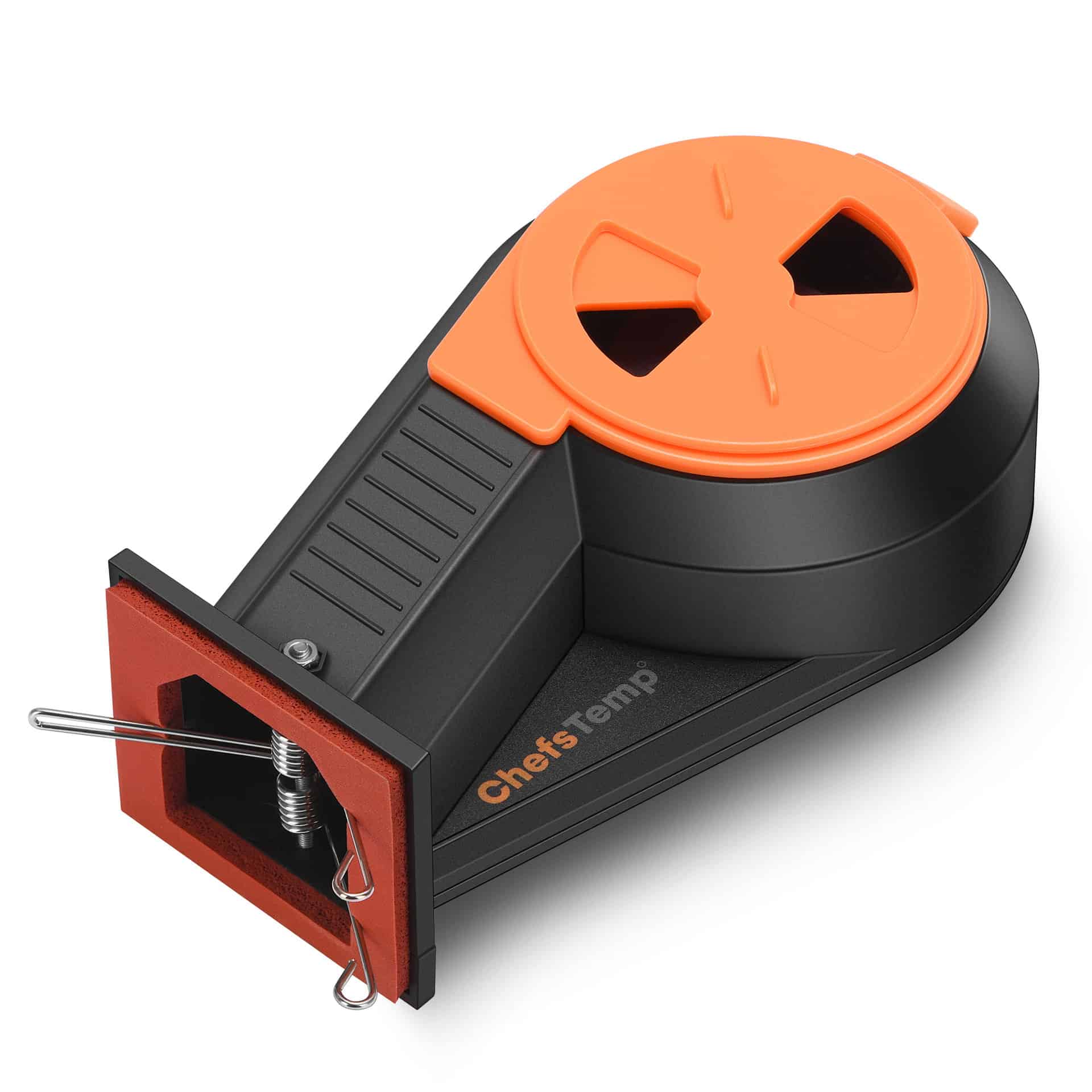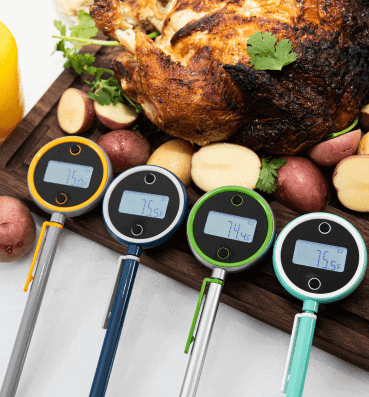
How Do I Cook the Perfect Steak?
This article will teach you all the steps you need to know about how to cook steak: choosing the right steak, preparing it, and what utensils to use including skillets, pans, and which meat thermometer to use.
Table of Contents
Choosing Your Cut and Preparation
There is one question that we hear ten times more than any other, “how do I cook the perfect steak?”
Let’s get something perfectly clear…THERE IS NO PERFECT STEAK!
By this, it means that the act of choosing, preparing, cooking, and eating a steak is an inherently personal experience. Basically, you could go to a barbecue, restaurant, or dinner party in which 10 people are sitting there dribbling and drooling, waiting for their lovely steaks to arrive. It’s not inconceivable that EVERY ONE OF THEM likes their steaks done in a different way and from a different cut of the beast, and so the concept of the perfect steak is a legendary myth up there with unicorns, Atlantis, the philosopher’s stone, and the generous Scotsman.
I’ll give you an example. When I was younger, I used to go to get a steak with my grandfather, sometimes on a Sunday. In those days I liked a well-done steak, like lots of younger people do, whereas grandfather preferred his steak to be extremely rare. My grandfather could often be heard advising the chef to “rip its horns off, wipe its bum and show it to the flame’ indicating that what he actually wanted was a ‘blue’ steak, the least cooked of them all. The cut matters as well. If you are a fan of well-done steaks there’s no way that you would want rump steak. If you have rump, well-done, then I suggest you order it on a Friday because you will still be chewing it on Monday! Well-done rump steak is as tough as a cowboy’s bunions.
Anyway, enough of this merriment, on with the good stuff.
Choosing Your Cut
As mentioned previously, the cut of steak you choose depends on personal taste, each different cut provides you with different levels of flavor and tenderness. It can also depend on how much money you have in your pocket at the time too.
Cheaper cuts
Flank steak and Bavette are very reasonable cuts, my advice is to cook them on the barbecue to no more than medium. Onglet or hanger steak contains tons of flavor but don’t cook this one beyond rare or it will have the consistency of rope used in the battle of Trafalgar (it really does look like rope). Rump steak is the famous go-to cut for families on a budget. This cut is the least expensive of the prime steaks but doesn’t cook it above medium unless eating the soles of boots is your thing. There is nothing wrong with the steaks mentioned above but if you want to splash out a bit more you can go for a: Sirloin steak is similar to fillet but with a bit more flavor. It apparently got its name after being ‘knighted’ by King Charles II, turning ‘loin’ into Sir Loin! Best eaten medium-rare.
T-bone steaks are delicious, especially if you finish cooking them in the oven.
Fillet steak can cost you a week’s wages but is the most tender cut and is best served blue or rare.
Rib-eye steaks provide a couple of cuts, one is boneless and the other on the bone. I always have one of each.
Flat-iron steaks are cut from the beast’s shoulder blade. I never cook this cut past medium.
Preparation
Steak snobs sometimes prefer to adopt a minimal seasoning attitude by adding nothing more than a large pinch of salt and some pepper. DO NOT listen to the detractors who say that pre-seasoning your steak with salt and pepper will dry the steak out by drawing out the moisture- absolute nonsense! This kind of pre-seasoning actively gives your cut the time to absorb the seasoning and renders it more seasoned throughout. Put the salt on your steak in advance, 2 hours for every inch of thickness is best. For a lovely peppered steak, dust a plate with loads of sea salt and cracked black pepper, and then squash the steak onto the plate to soak up the seasoning. Then put it straight into the pan.
Another way to tenderize the steak and enhance the flavor is with a tasty marinade. The simplest and most effective marinades for steak are balsamic vinegar, which will reduce down to a sweet glaze during cooking or a coating of honey and mustard. There are dozens of fancy marinades that you can use according to taste including miso or teriyaki if you are feeling a bit far-eastern.
My favorite steak flavoring is to add whole garlic cloves and full-bodied herbs like rosemary and thyme to the hot oil while the steak is cooking. This will add a subtle background flavor, without overwhelming the steak.
Listen! It doesn’t matter what cut you buy and how you like your steak cooked if cook it at the wrong temperature!

It’s of utmost importance that you check the cooking temperature of these steaks as they cook if you don’t want your blue turning out black! So a meat thermomter would be a great helper to check your steak or beef temperature.
Check out the next article in the series to find out how to prepare your steak, what to cook them in, how long to cook them, how to serve and I’ll introduce other factors like the temperature danger zone (scary stuff!), grilling frozen steak (yes it can be done!) and lots of other tips.
From cooking to eating
Hello again steak lovers! Welcome to the part two of the article. In this section, I will tell you how to cook a steak that is perfect for your individual taste. In the first part I taught you which cuts to buy and how to prepare them.
Now it’s time to have a look at the best way to cook that juicy steak. If you are cooking at home in your kitchen (I’d be surprised if you were cooking in your bathroom) I insist that you fry that lovely piece of the beast. Of course, you can grill it, but a frying pan or skillet will give you the best results, trust me! So, go to the shops and buy or steal a heavy-duty, thick based frying pan, or a heavy griddle pan, or a cast-iron skillet. These utensils get really, really hot and do a good job of retaining heat. This will make sure that your steak will end up with a beautiful charred, smoky finish on the surface. There MUST be plenty of room in the frying pan, if you decide to squash in all your steaks like a meat carpet they will not cook as well. Cook them individually, or two in a pan and then leave them to rest while you see to the others. You can also cook a thicker steak and slice it up to share it.
What should you cook the steak in?
The best oils to use are flavourless ones like vegetable, sunflower and groundnut oils, these are best for cooking steaks. When your steak begins to sear you can add butter to enhance the flavour (or not if you don’t want to).
If you are cooking up a delicious thick sirloin steak that has a thick strip of fat on the side try searing that first by holding the cut with a pair of tongs and cooking the cut in the resulting rendered beef fat. Be careful when you heat the pan as you do not want it to smoke.
Searing a steak
Do you want to make sure that your steak has lots of flavour? You would be a bit weird if you didn’t. The best way to ensure that your guests’ drool runs in rivers across the dining room floor is to sear your cut of steak until it gets a caramelised brown crust. First, make sure that the fat and the pan are hot enough and then sear it on one side. Then cook it for the same amount of time on the other side (naturally). To make sure that both sides of the cut are as caramelised and crusty as each other turn the steak over every minute of its cooking time.
Cooking times
To decide on the best cooking time, consider the size and weight of your cut. The most popular decent steaks are fillet and sirloin so I offer the following advice.
Get yourself a 3.5mm thick fillet steak and cook it-
Blue steak, cook for 1.5 minutes on each side
Rare steak, cook for 2.2 minutes on each side
Medium-rare, cook for 3.2 minutes on each side
Medium, cook for 4.5 minutes on each side
DO NOT cook fillet steak to well-done unless you are into chewing car tyres.
Now get yourself a 2cm thick sirloin steak and-
Blue steak, cook for 1 minute on each side
Rare steak, cook for 1.5 minutes on each side
Medium-rare, cook for 2 minutes on each side
Medium, cook for 2.2 minutes on each side
Well-done, Cook for about 4-5 mins each side

Serve the steak whole or carved into slices with the resting juices poured all over it. Yum!
These steaks need to be cooked by following the steak temperature chart – Blue steak temp: 192.2℉, Rare teak temp: 134.6℉, Medium rare steak temp: 145.4℉, Medium steak temp: 159.8℉, Well done steak temp: 167℉
How can I tell that it’s cooked properly?
Take your meat thermometer set your timer and insert it into the center of the steak to ensure that it’s done to your preference.
Now, rest your steak for a while
After you have finished cooking this piece of beast you should let it rest at room temperature for half of its cooking time, don’t worry, it will stay warm for up to 10 minutes. This will allow the fibers of the steak to absorb the juices making it tender and moist. Also, pour the resting juices over the cut before serving. This is what it should look and feel like.
A blue steak should still be dark, maybe even purple. It will have the consistency of a sponge.
A rare steak will be red with some reddish juices flowing. It will feel spongy and soft.
A medium-cooked steak will be pale pink in the middle and contain hardly any juice. It will feel firmer than the previous steaks.
A perfectly well-done steak has only a hint of pink color but is not dry. It will have a slightly springy consistency.

Finaltouch X10
The Finaltouch X10 thermometer from ChefsTemp gives an accurate reading not only for the inside of food but for surface temperatures as well. The diversity of the thermometer’s usage is second to none compared to other thermometers. By getting a reading within 1-3 seconds, the Finaltouch X10 from ChefsTemp is prepared to take on any task it is given.
2 Comments
Comments are closed.
Discover Other ChefsTemp Products
Discover more recipes and learn kitchen tricks by joining our cooking family on Facebook.
You may also like:



















[…] the myth of letting meat rest should give you a better idea of how to cook the perfect steak or meat. Do not be afraid to break any rules you’ve known for a long time. As long as you […]
[…] are a lot of arguments as to the best way to cook steak. However, the general consensus is that medium rare is the best. Of course, it boils down to […]